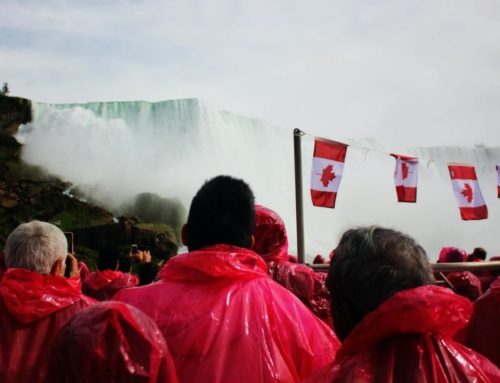Asia Pacific Foundation Canada recently polled Canadian Millennials to understand their perception of Asia as a whole. Given LAT’s focus on the region, as well as on marketing, I was curious to learn more and met with Dr. Eva Busza and Yushu Zhu to discuss some of the key findings of the poll.
“Canadian millennials are generally a lot more aware of Asia” - says Yushu - “they are more open than earlier generations to experience the region and its various cultures.”
The National Opinion Poll had one major takeaway:
Canadian millennials are interested, aware and knowledgeable about the region.
Why does this matter? Millennials are the largest group of the electorate in the federal government: their voice has a crucial role in terms of policy making.
The poll’s results tell us that perceptions of millennials towards Asia are significantly influenced by their first-hand experiences; those who have worked or travelled in Asia tend to form a more comprehensive, diverse view of the region.
[Yushu] “Younger Canadians would welcome more opportunities of grounded experiences of Asia”: work, study and travel all contribute to a heightened appreciation of the region.With this in mind, APFC is working with the Ministry of Education of British Columbia to create learning packages on Asian culture, history and geography that are going into the high school curriculum.
Check out their publicly available interactive website to learn more.

I asked Eva specifically about the role of Chinese tourism in Canada.
Eva: “The most important thing to recognize about Chinese tourism is that in 2016 the number of outbound tourists in China reached 122 million people. That’s a little over 8% of the Chinese population of 1.37 billion. With 610,000 Chinese tourists visiting us, Canada did not even make the list of the top 20 most popular country destinations.”
Translation: there is a huge market to be captured.
“Only 10% of the Chinese population today is travelling, and Canada is getting a microscopic number of those tourists.” (Eva Busza)
The emergence of Asian millennial travellers will have a significant impact on tourism in Canada.
Like millennials everywhere, this growing segment favours independent travel. They are known as “FIT” travellers (or, fully independent travellers).
The percentage of their spending on tourism in proportion to income is the highest compared to other age groups (roughly 35%).
What does this mean for Canadian businesses?
“The majority of millennial travellers seek experiences showcasing Canada’s unique natural and cultural offerings, engaging mostly in FIT travel.” (Source: Destination Canada/2016 Market Reports).
Tourists are interested in the history and culture of Canada – specifically in First Nations culture, authentic experiences and outdoor activities.
Given Chinese tourists’ propensity to share images and posts on social media, they are your best ambassadors. In fact, the tendency to share photos of our travel experiences is universal, as Destination Canada demonstrated with their very successful ‘35 million directors’ campaign a few years ago.
Engaging with the millennial traveller.
Millennials everywhere have one thing in common: they are social. Platforms such as Facebook, Twitter, Pinterest and WhatsApp are huge in our part of the world, but keep in mind that each region and country has their favorites. So how do you get your business or destination in front of this eager and willing global audience? Content & marketing adaptation is key.
To learn more about Asia Pacific Foundation’s research, head over to their website.
Here’s an excellent video on the growing category of Chinese Millennials travelling abroad (Source: Acorn Marketing & Research Consultants)
[1] In 2017 National Opinion Poll on Canadian Millennials’ perception of Asia. The study distinguished between two subgroups: younger millennials (18–24) and older millennials (25–34). All other age groups (35+) are collapsed into a reference group[/fusion_builder_column][/fusion_builder_row][/fusion_builder_container]




